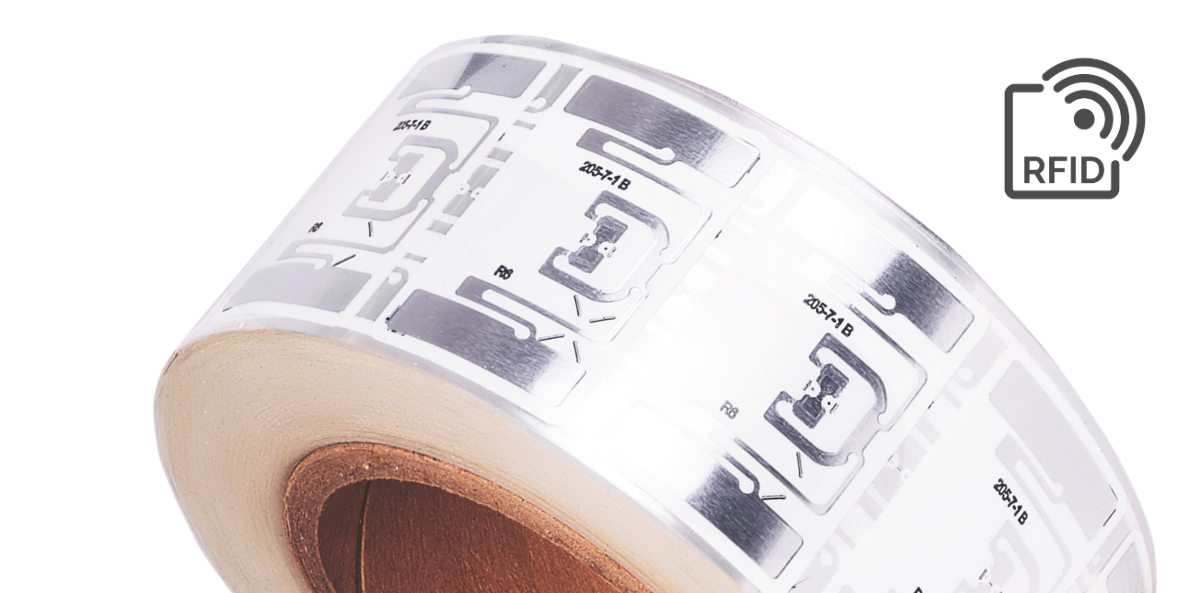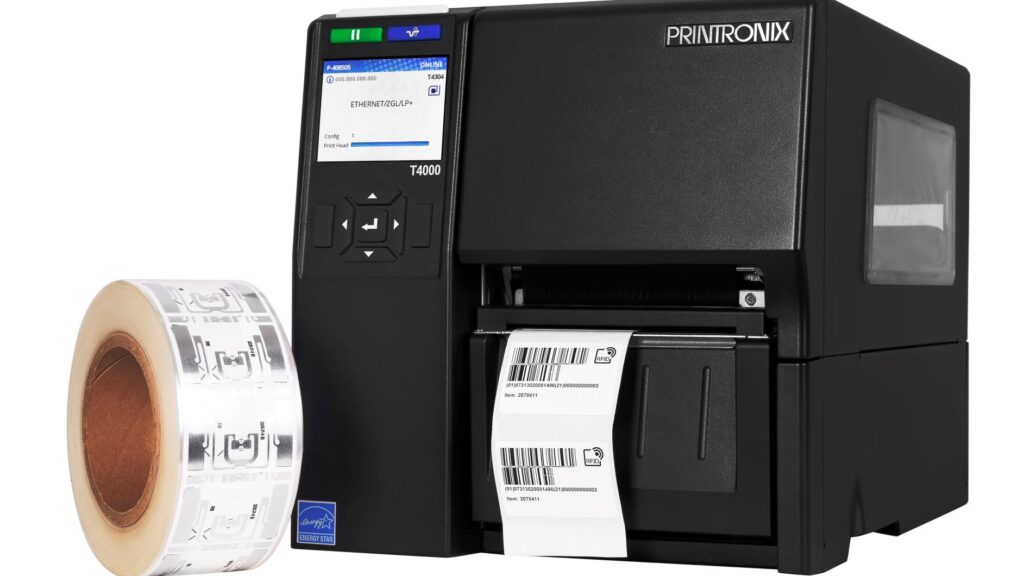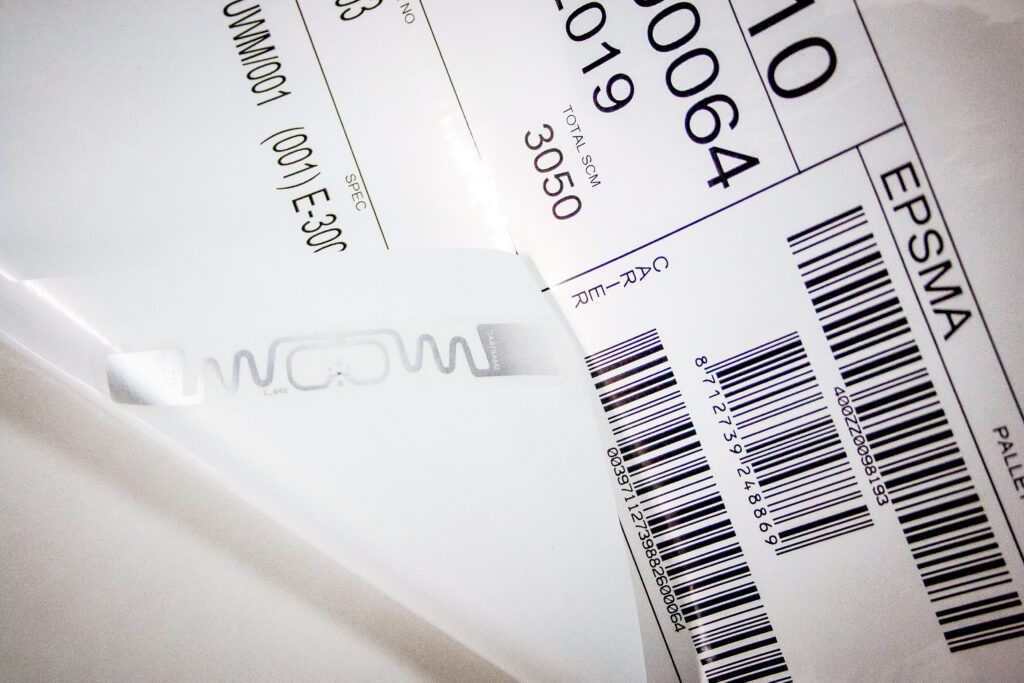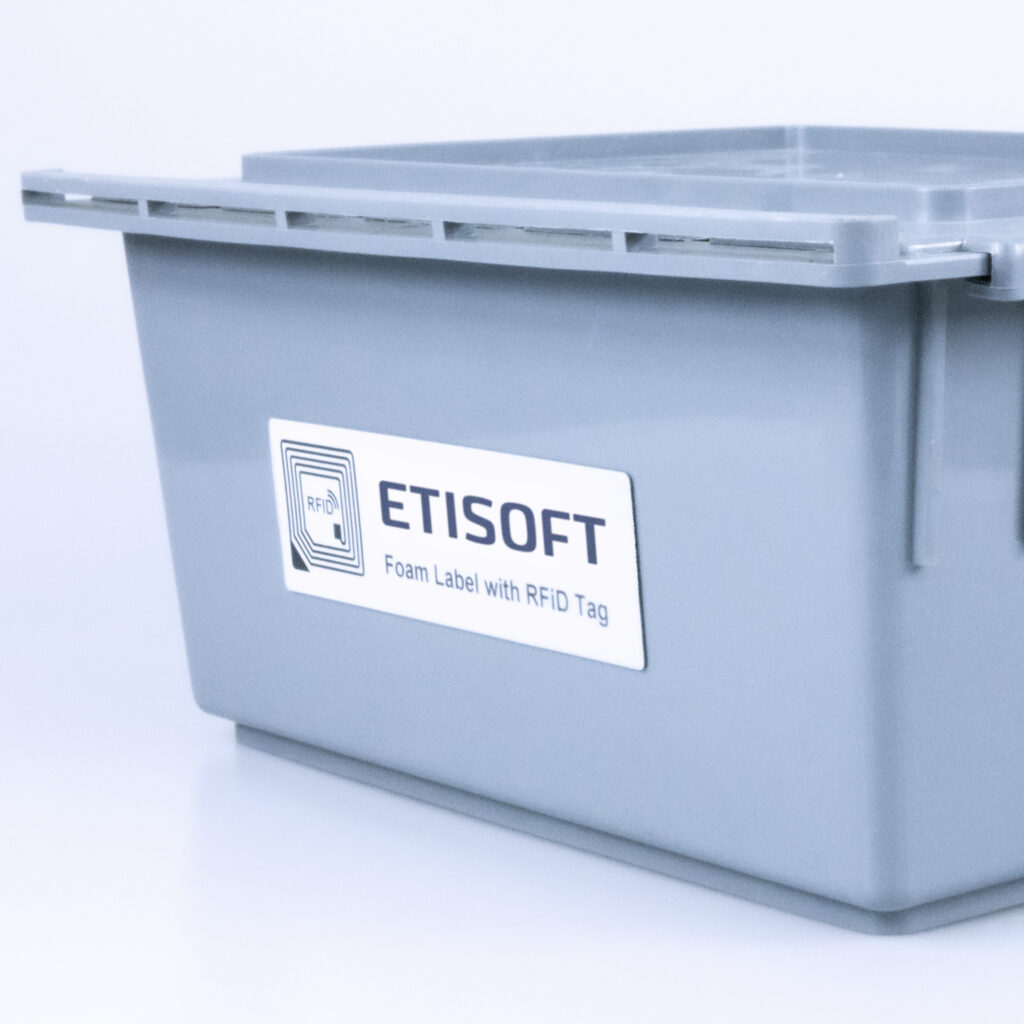
How to print RFID tags?
RFID technology, or Radio Frequency Identification, is playing an increasingly important role in many sectors of the economy, such as logistics, IT, commerce, manufacturing and even medicine. With the ability to wirelessly identify and track products, RFID tags enable better control of the flow of goods and automation of many processes. From this article you will learn how RFID tags are printed, what tags are, what types of tags there are, and how they can be programmed and used in your business.
How to print RFID labels and tags?

Printing RFID labels and tags combines label printing technology with the programming of special RFID tags, or tags embedded in the labels. To print them correctly, it is necessary to use specialized printers that support RFID technology. Such devices not only print graphic information, such as barcodes or text, but also store the data in the RFID chip embedded in the label.
The process is as follows:
- We prepare a label design. First, we design a label that contains not only visual information, but also the data to be stored on the RFID tag.
- Selecting an RFID printer – to print RFID labels, a special printer that can simultaneously print and program the RFID chip is required.
- Storing data in the RFID chip – after starting the printing process, the printer first stores the required data in the RFID chip, and then prints the information on the label.
- Validation. Once the process is complete, the printer verifies that the data has been correctly written to the RFID tag. If not, the label may be marked as defective.
- This process ensures that both the printed information and the data stored on the RFID tag are compatible and can be read in the future by RFID scanning equipment.
What does an RFID tag look like?

An RFID tag consists of several components. The main components are:
- chip (an integrated circuit in the form of a microprocessor) – this is the most important part of the tag, where the information is stored.
- antenna – is responsible for receiving and transmitting radio waves, so that the RFID tag can communicate with RFID readers. Its parameters determine the range in which the information can be read,
- carrier – the elements of the tag are fixed on a substrate. It can be paper, plastic or other materials. Some tags have additional shielding to protect them from mechanical or environmental damage.
RFID tags can come in different sizes and shapes, depending on their purpose. The smallest can be barely visible, while larger ones are several centimeters in size.
RFID technology from the ground up – facts and myths
How many types of RFID tags are there?
RFID tags can be divided into three main categories, depending on how they are powered and how often they operate. We distinguish between:
- Passive tags – the most popular and cheapest. They do not have their own power source, and get their energy from the signal sent by the RFID reader. They have a limited range (from a few centimeters to a few meters),
- Active tags – have a built-in battery, which allows them to communicate with the reader over longer distances (up to several tens of meters). Due to their higher price and larger size, active tags are used in more advanced tracking systems,
- Semi-active tags – combine features of passive and active tags. They have a built-in battery that powers only some functions of the tag (e.g., sensors), while communication is carried out using energy from the RFID reader.
In addition, RFID tags differ in their operating frequencies. The low one is used in access control and animal management systems. High, on the other hand, is popular in proximity cards and NFC applications. The ultra-high frequency, on the other hand, which ranges from 860 to 960 MHz, is used in logistics and warehouse management, allowing for greater range.
Are RFID tags programmable?
Most RFID tags are programmable. This means that various data can be stored on them, such as product IDs, serial numbers, expiration dates or other relevant information in the process of managing goods. Passive tags, while the simplest, can also be programmed, although they tend to have a limited amount of memory compared to more advanced active tags.
Programming of RFID tags is usually done using specialized equipment (RFID readers) or printers that support the technology.
What is the RFID chip used for?

In general, the RFID chip acts as a data carrier. They are recorded and stored in the tag. Depending on the application, the chip can store various information, such as:
- product identifier – a unique identification number that allows the product to be tracked at each stage of the supply chain,
- logistics data – information about location, inventory, production date or expiration date of the product,
- access data – in access control systems, the RFID chip stores authorization data to identify a person or device.
- The RFID chip is programmed to be able to receive radio signals from a reader, process them and react accordingly, transmitting the stored data back to the reading device.
How to program an RFID tag?
Programming RFID tags is a relatively simple process, but requires the right hardware and software. You’ll need an RFID printer or RFID reader with a data-writing function. Then you need to create a design. This requires preparation of the data to be stored on the chip. Using radio waves, the programming device writes this information to the chip. After the data is written, a test is usually conducted to ensure that the tag has been correctly programmed and the information can be read without problems.
RFID tag programming can be automated and integrated with other systems, making mass encoding much easier.
Can you print your own RFID tags?
It is possible to print your own RFID tags, but this requires specialized equipment. RFID printers allow you to simultaneously print the label’s graphical elements (such as barcodes, logos, texts) and store the data on an embedded chip.
Find out how ETILABEl works. Download the demo version!
The advantage of in-house RFID label printing is full control over the process and the ability to customize labels to meet individual company needs. This allows you to personalize labels for specific products, categories or logistics requirements.
For printing RFID labels, he recommends ETILABEL’s label printing and design program. The advanced professional solution allows you to encode and print RFID labels.
Which printers for RFID labels?
To print RFID labels you need high-quality professional equipment that supports this technology. In the Etisoft store you will find devices from reputable manufacturers such as Zebra and Printronix. Zebra has a wide range of RFID printers. Users value them for their reliability and print quality. While the Printronix brand – specializes in industrial printers.
Auto ID devices – printers and other accessories. Get to know our offer!
Manufacturers equip printers with special RFID modules. They allow simultaneous printing and programming of tags.
ETILABEL – now with greater capabilities and flexible collaboration rules
RFID label printing combines advanced printing technology with tag programming. This contributes to more efficient product management in various industries. The use of specialized equipment makes it possible to customize labels to suit your needs. This in turn translates into better control of the flow of goods and automation of logistics processes.
